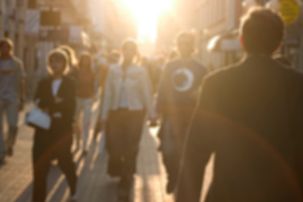Lesson summary
Students will investigate the state of the carbon budget designed to reduce emission by 2050. Given the budget and the percentage of emissions used between 2000-2013 students will calculate the rate of use, consider effects of percentage increases and decreases in emission rates for the remaining time frame and the anomalies between scientists and their own predictions. Students will then have the opportunity to use the skills applied through the worksheet the create their own plan for the reduction of emission.
Learning intentions:
Students will...
- understand that there are a range of risks and impacts associated with climate change.
- recognise that there are many different personal actions that we can all take to help fight climate change.
- understand that video can be a useful tool for communicating positive messages about climate change.
Lesson guides and printables
Lesson details
Curriculum mapping
Australian Curriculum content descriptions:
Year 5 English:
- Use interaction skills, for example paraphrasing, questioning and interpreting non-verbal cues and choose vocabulary and vocal effects appropriate for different audiences and purposes (ACELY1796)
- Plan, rehearse and deliver presentations for defined audiences and purposes incorporating accurate and sequenced content and multimodal elements (ACELY1700)
- Plan, draft and publish imaginative, informative and persuasive print and multimodal texts, choosing text structures, language features, images and sound appropriate to purpose and audience (ACELY1704)
- Use a range of software including word processing programs with fluency to construct, edit and publish written text, and select, edit and place visual, print and audio elements (ACELY1707)
Year 5 Geography:
- The influence of people, including Aboriginal and Torres Strait Islander Peoples, on the environmental characteristics of Australian places (ACHASSK112)
- Reflect on learning to propose personal and/or collective action in response to an issue or challenge, and predict the probable effects (ACHASSI104)
Year 6 English:
- Use interaction skills, varying conventions of spoken interactions such as voice volume, tone, pitch and pace, according to group size, formality of interaction and needs and expertise of the audience (ACELY1816)
- Plan, rehearse and deliver presentations, selecting and sequencing appropriate content and multimodal elements for defined audiences and purposes, making appropriate choices for modality and emphasis (ACELY1710)
- Plan, draft and publish imaginative, informative and persuasive texts, choosing and experimenting with text structures, language features, images and digital resources appropriate to purpose and audience (ACELY1714)
- Use a range of software, including word processing programs, learning new functions as required to create texts (ACELY1717)
Year 6 Science:
- Scientific knowledge is used to inform personal and community decisions (ACSHE220)
- Communicate ideas, explanations and processes in a variety of ways, including multi-modal texts (ACSIS110)
Syllabus Outcomes: GE3-2, GE3-3, GE3-4, ST3-6PW, ST3-4WS, EN3-1A, EN3-2A.
Resources required
- Internet access
- Student worksheet
- Cameras
Additional info
This is an original Cool.org lesson. Facts and figures in these lessons may have changed since this lesson was published. We always endeavour to update our resources in a timely manner, but if you see an error or issue in our resources please get in touch with us.


Welcome back!
Don't have an account yet?
Log in with:
By signing up to Cool.org you consent and agree to Cool's privacy policy to
store, manage and process your personal information. To read more, please see
our privacy policy here(Opens in new tab).
Create your free Cool.org account.
Many of our resources are free, with an option to upgrade to Cool+ for premium content.
Already have an account?
Sign up with:
By signing up to Cool.org you consent and agree to Cool's privacy policy to
store, manage and process your personal information. To read more, please see
our privacy policy here(Opens in new tab).